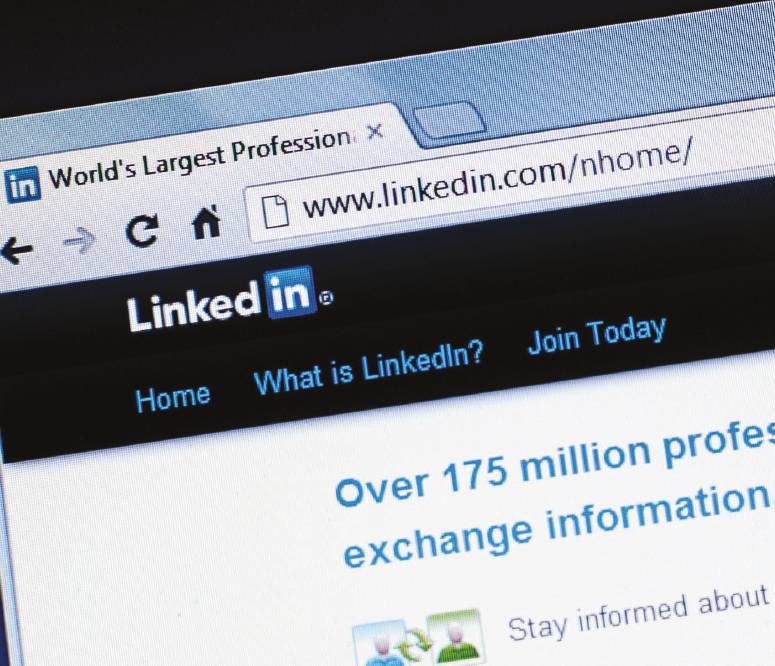Social media
Staying savvy in the cyber world
Dr David Cliff explains how you can get the best out of LinkedIn.

About the author
Gedanken is a leading-edge executive and business-coaching organisation, founded by Dr David Cliff, an expert coach and mentor with over 35 years of management and personal development experience. He was recently named Lead Ambassador for Mentoring and Lead Ambassador for Mental Health by the Institute of Directors North East, and was awarded Mentor of the Year at the 2017 Entrepreneur's Forum Awards.
It was worthy of note that, in the mid-1990s, the tipping point from comparatively rare use of e-mail was superseded by its almost ubiquitous use within around a three-year period. Since then, the speed of uptake of new technology has gone from periods of five or so years down to sometimes a matter of months. The past 18 months have seen LinkedIn, for example, become the ‘go to’ site for business connections, in particular, recruitment, where people can signal their availability for work and others can recruit therefrom.
It is amazing how many people in the legal profession have only a cursory knowledge of platforms such as LinkedIn, which is evident from some appallingly lacklustre profiles.
Having your presence in any social media, including LinkedIn, is not just a strategic issue around thoughtful marketing as the absence of your presence can be as detrimental as not having a website. Indeed, many people have taken to using platforms such as LinkedIn rather than a firm's website to find out more about individuals. It reflects a post-modern world, where individual identities are often prized above the structures and organisations that embody them.
In short, if you think that your website promotes your company effectively and you need have no cognisance of social media, or perhaps you think that social media is something just for outsourced social media experts, you may be missing something vital.
LinkedIn is an imprecise science because it produces different benefits for different people. Unless you are marketing (or recruiting) vigorously via the website, it is probably not necessary to pay a subscription. The overwhelming majority of LinkedIn presences are based on the free option, and the benefits of a subscription arrangement, which offers the ability to provide targeted e-mails and refine searches, requires time and effort to capitalise upon.
As with all marketing, LinkedIn is a choice, with the benefits reflecting the thought, time and effort given to it. This can feel counterintuitive in a culture of fee earning, where marketing is often relegated to a ‘nice to have if time permits’ or in larger firms is often given to a business development manager to handle. For companies that do not employ such business-savvy beings, it is possible to have a worthwhile LinkedIn presence with minimal effort. See opposite for a few tips on getting the best out of LinkedIn.
Own it as much as you do your plate on the office door, your business card or your presence at any networking event
LinkedIn is a window on the world, where people look in on you and you on them. Appearance is really important in any social encounter, and you should treat the viewing of your LinkedIn presence as a first social encounter that ultimately could lead to business, recruitment of staff, information exchange, and a plethora of other outcomes.
First impressions are, of course, governed by that natural human tendency for confirmation bias. Just like your website, if your LinkedIn site is poorly maintained, lacking a good photograph, poorly set out or just plain impersonal (as many solicitors’ firms’ websites can be), this is a first impression that can bias the viewer negatively and will take some time to displace. You are effectively beginning a relationship with someone who has sought to contact you (or vice versa) with an uphill struggle (assuming that they then decide to ascend in the first place!).

‘Owning’ means maintenance and careful thought, taking responsibility for how you communicate to the outside world.
Have a presence in it
Put your best credentials there, as well as your interests, the charities you support and any distinguishing experience that you have had. Most importantly, get over any sense of shyness and get a decent photograph.
Just as a website might represent your firm, LinkedIn often represents individuals even if the practice has its own discrete profile. People relate to people far more than to organisations on this platform.
Don't be afraid to stand out
In the straplines around your titling, talk about what makes you tick, what you are looking for and try to avoid cliché phrases (these do not impress and create ‘distance’). Remember, this platform is trying to represent you as an individual, whether that is in the context of your own identity, your particular competences or your sense of belongingness to your profession and/or firm. You need to come over as credible and human at the same time.
Encourage commendation
Now a lot of people believe that most of the recommendations on LinkedIn are about people who have unashamedly garnered willing clients to write positive things about them. But isn't that just the nature of commendation? It is very rarely proffered unless asked for.
Ask clients to write a short testimonial, and it is amazing how many willingly oblige. Remember, you have a right of veto, or to request amendments, if you are unhappy in any way.
Commendations and testimonials offer incredible social proof to viewers that you are capable of what you profess. They enable the viewer to triangulate the statements you have made, with the experience of another. Do not stop at a few testimonials: make sure that they are regularly updated so people can see a consistent pattern of commendation along the timeline.
Link with people
Engage also with the people who attempt to link with you. There is a natural caution to linking through this platform, as one can easily get peppered with marketing ploys; however, linking offers a way to extend your social and business network.
Many of these links will not (in common with all networking) be productive, but some will. It is, therefore, important to not just click and go away, but drop that person a line or suggest a quick call to consolidate the link and truly ‘connect’. Even if there is no business to be had now, chances are that if someone needs a service like yours in future, they will consider that they have had a previous association with you and are more likely to approach you.
Get copy out there!
Have you written documents or articles? Have you featured in the press recently or in a video? If so, you can post all of these things onto LinkedIn.
Unlike a website, LinkedIn then becomes much more interactive with the people connected to you. They can see your knowledge and expertise in an area, your proactivity approach, and some of your successes as well as some of your more erudite thoughts on your preferred subject.
Yes, it is another time burden, but social media platforms such as LinkedIn are not going to go away. Truly savvy firms know this, and invest some time and effort as part of their marketing and promotion strategy. Some of the returns are dubious, but so was having e-mail in the early 1990s when the majority of people did not have it. Do not be left behind as, increasingly, social media becomes a major force of communication in our society, and you are stuck playing catch up to your competitors!
Final thoughts
The brass plate, business card and ‘brochure’ website do not cut it in modern marketing approaches. The savvy, sustainable firms of the future must fully understand and properly exploit the value of cyberspace marketing in its myriad forms.